- About USA
- Economy
- White House
- Denali National Park
- Las Vegas Strip
- Florida Keys
- Kilauea
- Niagara Falls (US Side)
- Golden Gate Bridge
- Yellowstone
- Manhattan
- Grand Canyon
- Apply for a Tourist U.S. Visa in India
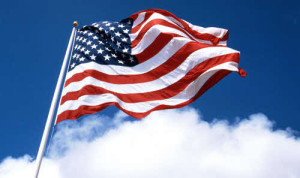
The United States of America (USA or U.S.A.), commonly called the United States (US or U.S.) and colloquially as America is a Federal republic consisting of fifty states and a federal district.
The country is situated mostly in central North America, where its forty-eight contiguous states and Washington, D.C., the capital district, lie between the Pacific and Atlantic Oceans, bordered by Canada to the north and Mexico to the south. The state of Alaska is situated in the northwest portion of the continent, with Canada to its east and Russia to its west across the Bering Strait. The state of Hawaii is an archipelago in the mid-Pacific. The country also possesses several territories in the Pacific and Caribbean.
At 3.79 million square miles (9.83 million km2) and with around 315 million people, the United States is the third- or fourth-largest country by total area, and the third – largest by both land area and population. It is one of the world’s most ethnically diverse and multicultural nations, the product of large-scale immigration from many countries. The geography and climate of the United States is also extremely diverse and is home to a variety of species.
On July 4, 1776, delegates from the 13 colonies unanimously issued the Declaration of Independence, which established the United States of America. The new country defeated Britain in the Revolutionary War, which became the first successful war of independence against a European empire. The current Constitution was adopted on September 17, 1787; several Amendments were later added to the Constitution, modifying its effects but not changing the original text. The first ten amendments, collectively named the Bill of Rights, were ratified in 1791 and guarantee many fundamental civil rights and freedoms.
Driven by the doctrine of manifest destiny, the United States embarked on a vigorous expansion across North America throughout the 19th century, displacing native tribes, acquiring new territories, and gradually admitting new states. The American Civil War ended legalized slavery in the United States. By the end of the nineteenth century, the American national economy was the world’s largest.
The United States is a developed country and has the world’s largest national economy, with an estimated 2012 GDP of $15.6 trillion – 19% of global GDP at purchasing-power parity, as of 2011. The per capita GDP of the U.S. was the world’s sixth highest as of 2010. The economy is fueled by an abundance of natural resources, a well-developed infrastructure, and high productivity; and while its economy is considered post-industrial it continues to be one of the world’s largest manufacturers. The country accounts for 41% of global military spending, and is a leading economic, political, and cultural force in the world, as well as a leader in scientific research and technological innovation.
Religion
The United States is officially a secular nation; the First Amendment of the U.S. Constitution guarantees the free exercise of religion and forbids the establishment of any religious governance. In a 2002 study, 59% of Americans said that religion played a “very important role in their lives”, a far higher figure than that of any other wealthy nation. According to a 2007 survey, 78.4% of adults identified themselves as Christian, down from 86.4% in 1990.
Communities of Hindus, Muslims, Christians, Sikhs, Jains, Buddhists, Parsis, Jews, from India have established their religions in the United States. According to 2012 Pew Research Center, 51% Consider themselves Hindus, 18% as Christians (Protestant 11%, Catholic 5%, Other Christian 3%), 10% as Muslims, 5% as Sikh, 2% as Jain and 10% are Unaffiliated.
Political divisions
The United States is a federal union of fifty states. The original thirteen states were the successors of the thirteen colonies that rebelled against British rule. Early in the country’s history, three new states were organized on territory separated from the claims of the existing states: Kentucky from Virginia; Tennessee from North Carolina; and Maine from Massachusetts. Most of the other states have been carved from territories obtained through war or purchase by the U.S. government. One set of exceptions includes Vermont, Texas, and Hawaii: each was an independent republic before joining the union. During the American Civil War, West Virginia broke away from Virginia. The most recent state—Hawaii—achieved statehood on August 21, 1959. The states do not have the right to unilaterally secede from the union.
The United States has a capitalist mixed economy, which is fueled by abundant natural resources, a well-developed infrastructure, and high productivity. According to the International Monetary Fund, the U.S. GDP of $15.1 trillion constitutes 22% of the gross world product at market exchange rates and over 19% of the gross world product at purchasing power parity (PPP). Though larger than any other nation’s, its national GDP was about 5% smaller at PPP in 2011 than the European Union’s, whose population is around 62% higher. The country ranks ninth in the world in nominal GDP per capita and sixth in GDP per capita at PPP. The U.S. dollar is the world’s primary reserve currency.
The United States is the largest importer of goods and second largest exporter, though exports per capita are relatively low. In 2010, the total U.S. trade deficit was $635 billion. Canada, China, Mexico, Japan, and Germany are its top trading partners. In 2010, oil was the largest import commodity, while transportation equipment was the country’s largest export. China is the largest foreign holder of U.S. public debt.
Infrastructure
-
The United States has been a leader in scientific research and technological innovation since the late 19th century. In 1876, Alexander Graham Bell was awarded the first U.S. patent for the telephone. Thomas Edison’s laboratory developed the phonograph, the first long-lasting light bulb, and the first viable movie camera. Nikola Tesla pioneered alternating current, the AC motor, and radio. In the early 20th century, the automobile companies of Ransom E. Olds and Henry Ford popularized the assembly line. The Wright brothers, in 1903, made the first sustained and controlled heavier-than-air powered flight.
-
Personal transportation is dominated by automobiles, which operate on a network of 13 million roads, including one of the world’s longest highway systems. The world’s second largest automobile market, the United States has the highest rate of per-capita vehicle ownership in the world, with 765 vehicles per 1,000 Americans. About 40% of personal vehicles are vans, SUVs, or light trucks. The average American adult (accounting for all drivers and non drivers) spends 55 minutes driving every day, traveling 29 miles (47 km).
-
The United States energy market is 29,000 terawatt hours per year. Energy consumption per capita is 7.8 tons of oil equivalent per year, the 10th highest rate in the world. In 2005, 40% of this energy came from petroleum, 23% from coal, and 22% from natural gas. The remainder was supplied by nuclear power and renewable energy sources. The United States is the world’s largest consumer of petroleum. For decades, nuclear power has played a limited role relative to many other developed countries, in part due to public perception in the wake of a 1979 accident. In 2007, several applications for new nuclear plants were filed. The United States has 27% of global coal reserves.
-
American public education is operated by state and local governments, regulated by the United States Department of Education through restrictions on federal grants. In most states, children are required to attend school from the age of six or seven (generally, kindergarten or first grade) until they turn eighteen (generally bringing them through twelfth grade, the end of high school); some states allow students to leave school at sixteen or seventeen. About 12% of children are enrolled in parochial or nonsectarian private schools. Just over 2% of children are homeschooled.
-
The United States life expectancy of 78.4 years at birth ranks it 50th among 221 nations. Increasing obesity in the United States and health improvements elsewhere have contributed to lowering the country’s rank in life expectancy from 1987, when it was 11th in the world. Obesity rates in the United States are among the highest in the world. Approximately one-third of the adult population is obese and an additional third is overweight; the obesity rate, the highest in the industrialized world, has more than doubled in the last quarter-century. Obesity-related type 2 diabetes is considered epidemic by health care professionals. The infant mortality rate of 6.06 per thousand places the United States 176th highest out of 222 countries.
-
Law enforcement in the United States is primarily the responsibility of local police and sheriff’s departments, with state police providing broader services. Federal agencies such as the Federal Bureau of Investigation (FBI) and the U.S. Marshals Service have specialized duties. At the federal level and in almost every state, jurisprudence operates on a common law system
-
The United States is a multicultural nation, home to a wide variety of ethnic groups, traditions, and values. Aside from the now small Native American and Native Hawaiian populations, nearly all Americans or their ancestors immigrated within the past five centuries. Mainstream American culture is a Western culture largely derived from the traditions of European immigrants with influences from many other sources, such as traditions brought by slaves from Africa. More recent immigration from Asia and especially Latin America has added to a cultural mix that has been described as both a homogenizing melting pot, and a heterogeneous salad bowl in which immigrants and their descendants retain distinctive cultural characteristics.
Indians are among the largest ethnic groups legally immigrating to the United States. The immigration of Indian Americans has taken place in several waves since the first Indian American came to the United States in the 1700s. A major wave of immigration to California from the region of Punjab took place in the first decade of the 20th century. Another significant wave followed in the 1950s, which mainly included students and professionals. The elimination of immigration quotas in 1965 spurred successively larger waves of immigrants in the late 1970s and early 1980s. With the technology boom of the 1990s, the largest influx of Indians arrived between 1995 and 2000. This latter group has also caused surge in the application for various immigration benefits including applications for green card. This has resulted in long waiting periods for people born in India from receiving these benefits.
Top Tourist Attractions in the USA
As one of the largest and most diverse countries in the world, The United States boast an amazing amount of tourist destinations ranging from the skyscrapers of New York and Chicago, the natural wonders of Yellowstone and Alaska to the sunny beaches of California, Florida and Hawaii. With so many tourist attractions it’s tempting to list entire cities or even states, but in this top 10 I have tried to focus on specific attractions.
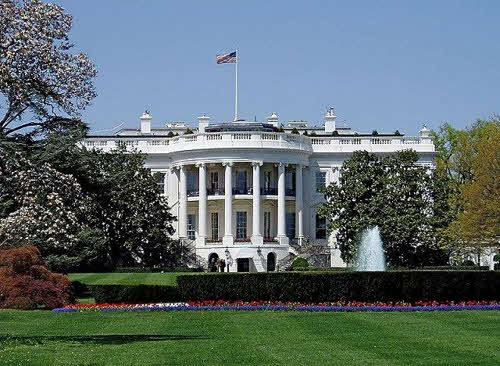
The White House in Washington DC is the official residence and office of the President of the United States. It was built between 1792 and 1800 and first used by President John Adams. After the 9/11 attacks it has become more difficult to visit the White House and today tours are available only for groups of 10 or more and must be requested up to six months in advance through your member of Congress or your country’s US Ambassador.
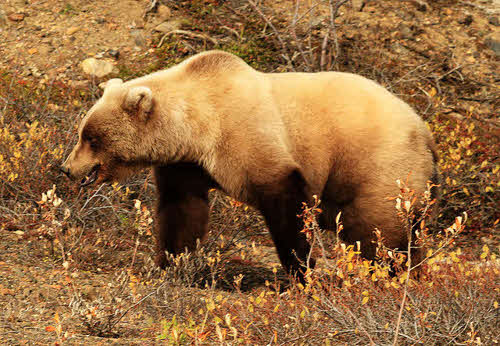
The Denali National Park and Preserve is located in Interior Alaska and contains Mount McKinley, the highest mountain in North America. The word “Denali” means “the high one” in the native Athabaskan language and refers to Mount McKinley. In addition, the park protects an incredible wilderness area that contains grizzly bears, caribou, moose, wolves, and numerous other creatures.

The gambling Mecca of the world, Las Vegas is situated in the midst of the southern Nevada desert landscape. Casinos can be found throughout Las Vegas, but the strip, a stretch of Las Vegas Boulevard South, contains the most of them. It features giant mega-casino hotels, decorated with lavish care and attention to detail to create a fantasy-like atmosphere. The casinos often have names and themes that evoke romance, mystery, and far-away destination.
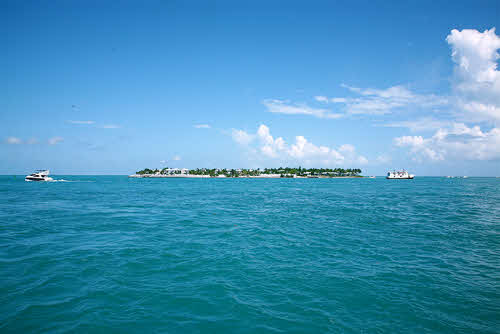
The Florida Keys is a 120-mile long chain of tropical islands curving around the base of the Florida peninsula, connected to the mainland by a series of bridges. The most spectacular bridge, the Seven Mile Bridge in the Lower Keys, has been frequently used as a location for films including True Lies and Fast 2 Furious. US Highway 1, the “Overseas Highway” runs from Key Largo, Islam Dora, Marathon, Lower Keys and finally to Key West, the most distant and most famous island.

Kilauea is the most recent of a series of volcanoes that have created the Hawaiian Archipelago. It is a very low, flat shield volcano, vastly different in profile from the high, sharply sloping peaks of stratovolcanoes. Kilauea is one of the most active volcanos on the Earth, an invaluable resource for volcanologists. Thirty-three eruptions have taken place since 1952, not including the current eruption, which started on January 3, 1983 and is still ongoing. Kilauea is the most recent of a series of volcanoes that have created the Hawaiian Archipelago. It is a very low, flat shield volcano, vastly different in profile from the high, sharply sloping peaks of stratovolcanoes. Kilauea is one of the most active volcanos on the Earth, an invaluable resource for volcanologists. Thirty-three eruptions have taken place since 1952, not including the current eruption, which started on January 3, 1983 and is still ongoing.

Situated between the state of New York and the province of Ontario, Niagara Falls is one of the most spectacular natural wonders on the North American continent. Niagara Falls is actually three different falls, the American Falls, Bridal Veil Falls and Horseshoe Falls. Horseshoe Falls is located on the Canadian side while the other is located in New York. With more than 14 million visitors each year it is one of the most visited tourist attraction in the world.

The Golden Gate Bridge is a suspension bridge spanning the Golden Gate, the strait between San Francisco and Marin County to the north. The Golden Gate Bridge was the longest suspension bridge span in the world when it was completed in 1937, and has become an internationally recognized symbol of San Francisco and California. The famous red-orange color of the bridge was specifically chosen to make the bridge more easily visible through the thick fog that frequently shrouds the bridge.
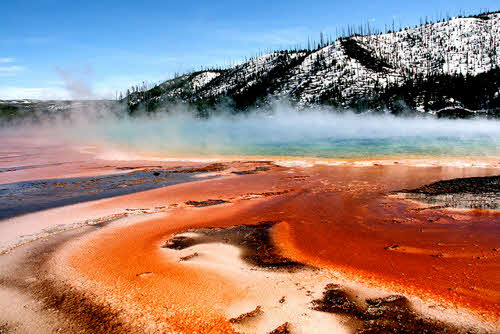
Yellowstone National Park was the world’s first national park, set aside in 1872 to preserve the vast number of geysers, hot springs, and other thermal areas, as well as to protect the incredible wildlife and rugged beauty of the area. Yellowstone lies on top of a gigantic hotspot where light, hot, molten mantle rock rises towards the surface. Subsequently, the park contains half of all the world’s known geothermal features, with more than 10,000 examples of geysers and hot springs. In addition, black bears, grizzly bears, deer, elk, bison and wolves can all be found within the park borders

Manhattan is one of New York’s five boroughs and is what people most often think of when they picture New York. It’s familiar skyline and sights have been featured a thousand times on screen. Walk in the shadow of the skyscrapers, picture the Statue of Liberty, see a Broadway show, climb the Empire State building, stroll Central Park, window shop on 5th Avenue or stagger around a museum.

The Grand Canyon is located in northern Arizona and is one of the great tourist attractions in the United States. Carved over several million years by the Colorado River, the canyon attains a depth of over 1.6 km (1 mile) and 446 km (277 miles) long. The Grand Canyon is not the deepest or the longest canyon in the world but the overwhelming size and its intricate and colorful landscape offers visitor spectacular vistas that are unmatched throughout the world.
Apply for a Tourist U.S. Visa in India
Overview
The B-1/B-2 visitor visa is for people traveling to the United States temporarily for business (B-1) or for pleasure or medical treatment (B-2). Generally, the B-1 visa is for travelers consulting with business associates, attending scientific, educational, professional or business conventions/conferences, settling an estate or negotiating contracts. The B-2 visa is for travel that is recreational in nature, including tourism, visits with friends or relatives, medical treatment and activities of a fraternal, social or service nature. Often, the B-1 and B-2 visas are combined and issued as one visa: the B-1/B-2.
Qualifications
If you apply for a B-1/B-2 visa, you must demonstrate to a consular officer that you qualify for a U.S. visa in accordance with the U.S. Immigration and Nationality Act (INA). Section 214(b) of the INA presumes that every B-1/B-2 applicant is an intending immigrant. You must overcome this legal presumption by showing:
-
That the purpose of your trip to the United States is for a temporary visit, such as business, pleasure, or medical treatment
-
That you plan to remain in the United States for a specific, limited period of time
-
Evidence of funds to cover your expenses while in the United States
-
That you have a residence outside the United States, as well as other binding social or economic ties, that will ensure your return abroad at the end of your visit
Personal or domestic employees and crewmembers working aboard vessels within the Outer Continental Shelf may qualify for B-1 visas under certain circumstances.
Some foreign nationals may be ineligible for visas according to The Immigration and Nationality Act
Application Items
If you apply for a business/tourist visa, you must submit the following
1) A Nonimmigrant Visa Electronic Application (DS-160) Form.
2) A passport valid for travel to the United States with a validity date at least six months beyond your intended period of stay in the United States
A receipt showing payment of your US$160 non-refundable nonimmigrant visa application processing fee, paid in local currency
How to Apply
Step 1
Pay the visa application fee with either Citibank / Axis Bank Nominated Branch.
Step 2
Complete the Nonimmigrant Visa Electronic Application (DS-160) form.
Step 3
Schedule your appointment on this web page. You will need three pieces of information in order to schedule your appointment:
-
Your passport number
-
The date you paid your fee
-
The ten (10) digit barcode number from your DS-160 confirmation page
Step 4
Visit the U.S. Embassy or Consulate on the date and time of your visa interview. You must bring a printed copy of your appointment letter, your DS-160 confirmation page, one photograph taken within the last six months, your current and all old passports, and the original visa fee payment receipt. Applications without all of these items will not be accepted.
Supporting Documents
Supporting documents are only one of many factors a consular officer will consider in your interview. Consular officers look at each application individually and consider professional, social, cultural and other factors during adjudication. Consular officers may look at your specific intentions, family situation, and your long-range plans and prospects within your country of residence. Each case is examined individually and is accorded every consideration under the law.
Caution: Do not present false documents. Fraud or misrepresentation can result in permanent visa ineligibility. If confidentiality is of concern, the applicant should bring the documents to the Embassy or Consulate in a sealed envelope. The Embassy or Consulate will not make this information available to anyone and will respect the confidentiality of the information.
You should bring the following documents to your interview. Original documents are always preferred over photocopies and you must bring these documents with you to the interview. Do not fax, email or mail any supporting documents to the Embassy or Consulate.
-
Current proof of income, tax payments, property or business ownership, or assets.
-
Your travel itinerary and/or other explanation about your planned trip.
-
A letter from you employer detailing your position, salary, how long you have been employed, any authorized vacation, and the business purpose, if any, of your U.S. trip.
-
Criminal/court records pertaining to any arrest or conviction anywhere, even if you completed your sentence or were later pardoned.
Additionally, based on your purpose of travel, you should consider bringing the following:
Students
Bring your latest school results, transcripts and degrees/diplomas. Also bring evidence of financial support such as monthly bank statements, fixed deposit slips, or other evidence, supported by an I-20 From an Legitimate educational Institution or University.
Working adults
Bring an employment letter from your employer and pay slips from the most recent three months.
Business visitors and company directors
Bring evidence of your position in the company and remuneration.
Visiting a relative
Bring photocopies of your relative’s proof of status (e.g. Green Card, naturalization certificate, valid visa, etc.).
Previous visitors to the United States
If you were previously in the United States, any documents attesting to your immigration or visa status.
Supporting Documents for Applicants Seeking Medical Care
If you wish to travel to the U.S. for medical treatment, then you should be prepared to present the following documentation in addition to the documents listed above and those the consular officer may require:
-
A medical diagnosis from a local physician explaining the nature of your ailment and the reason you require treatment in the United States.
-
A letter from a physician or medical facility in the United States expressing a willingness to treat this specific ailment and detailing the projected length and cost of treatment (including doctors’ fees, hospitalization fees, and all medical-related expenses).
-
A statement of financial responsibility from the individuals or organization paying for your transportation, medical and living expenses. The individuals guaranteeing payment of these expenses must provide proof of their ability to do so, often in the form of bank or other statements of income/savings or certified copies of income tax returns.
